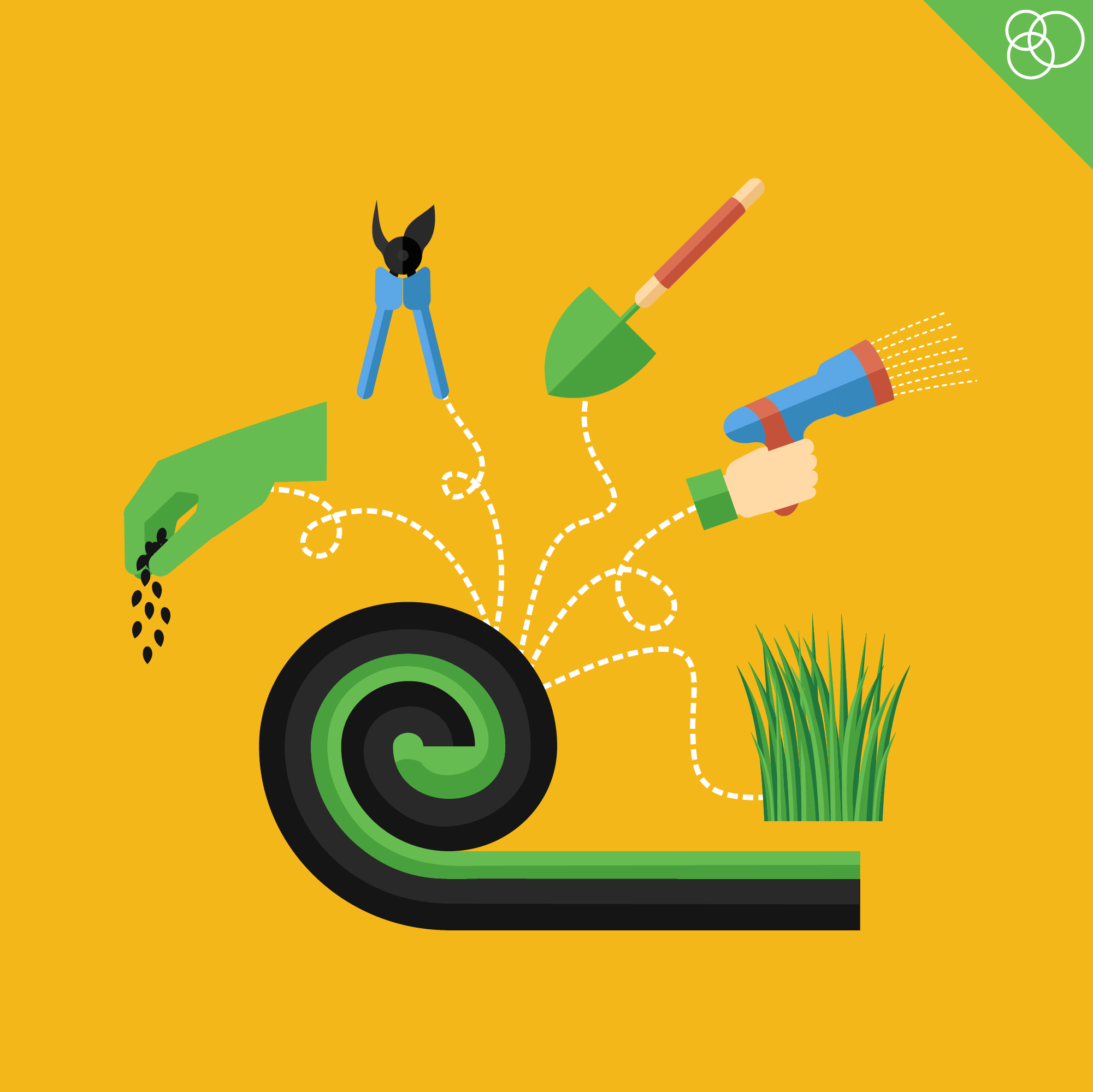March Preparation for a Healthy Lawn All Year
March 10, 2017

Winter is finally starting to lighten up after months of snow, ice and cold. If you’re like us, you’re already dreaming of warm spring days lying in the grass and finding shapes in the fluffy clouds that pass overhead. In order for that lazy daydream to become a reality, a well-tended lawn is a must. Even if you haven’t seen your lawn in weeks, now’s the time to get started making your lawn the best it can be this year. Follow the tips below, and you’ll be well on your way to taking your lawn from yawn to bomb.
Heart and Soil
It all starts with the soil. Typically, you won’t have to water your lawn in March, but if you notice the soil is dry, occasionally hitting it with some water can help keep it from drying out. This is especially important at the end of the month, if it’s been a while since it rained. If it’s been raining regularly, pull back. At this stage, you should only water as needed, but when you do, be sure to water deeply. It helps your lawn’s roots grow. Hearty roots = strong lawn.
How do you know if your soil is dry? Push a knife or screwdriver into the dirt. If the blade comes up clean, or you have trouble pushing it in very far, you have dry soil. Another indicator is the springiness of your blades of grass. If you step on your lawn and it doesn’t spring back quickly, it’s too dry. Lighter-colored blades also indicate dryness
If you’ve noticed your lawn returning to that emerald shade once more, try fertilizing. It will encourage the lawn to continue to green up and will set your grass up for success in coming months.
March Maintenance
If you are just starting to see green again, it may seem counterintuitive to mow your lawn, but this will actually set your grass up for new growth! The first time you mow, use the second lowest setting on your lawnmower. The goal is to trim off the winter damage to encourage new growth. Be sure to continue to fertilize in conjunction with mowing to repair that winter damage and keep your lawn looking lush all year. Moving forward, you will need to cut your lawn on the second highest setting. At this stage, your grass goal will be absorbing sunlight and fighting weeds.
The Usual Suspects
March weeds are typically the perennial kind. These can include Dandelions, Thistle, and Mallow. Depending on the type of weed occurring in your yard, you will need to treat with either a selective or non-selective herbicide. Broad-leaf weeds call for the selective variety, whereas grassy weeds require non-selective herbicide. Unfortunately, this means the lawn will need to be replanted in that particular area.
Insects can also wreak havoc on your lawn. Normally, this does not happen until later in the year, but as more and more of your yard turns that delightful shade of green, you may see patches of brown. To determine if creepy crawlies are the cause, pull on the brown areas. If it pulls up like a rug, and little white bugs are visible on the soil, you have an infestation. Control the problem with insecticide and monitor weekly. If the issue persists, repeat weekly until all signs of insects are gone.
If your lawn is grey, pink or slimy, you may be dealing with snow mold. Fertilizer and some good ol’ sunshine will eliminate this problem in about a month’s time.
With the maintenance and tips above, the grass will be greener on your side of the fence this year. Maybe you’re still dreaming of the day you’ll have a little lawn to call your own? At GCD, we share that dream, so we provide front yard landscaping including trees, shrubs, sod, and an automated sprinkler system standard in each of our Traditions homes. Ready to take the plunge? Let us know how we can get you well on your way to soaking up the sun in the grassy shadow of your own GCD home.